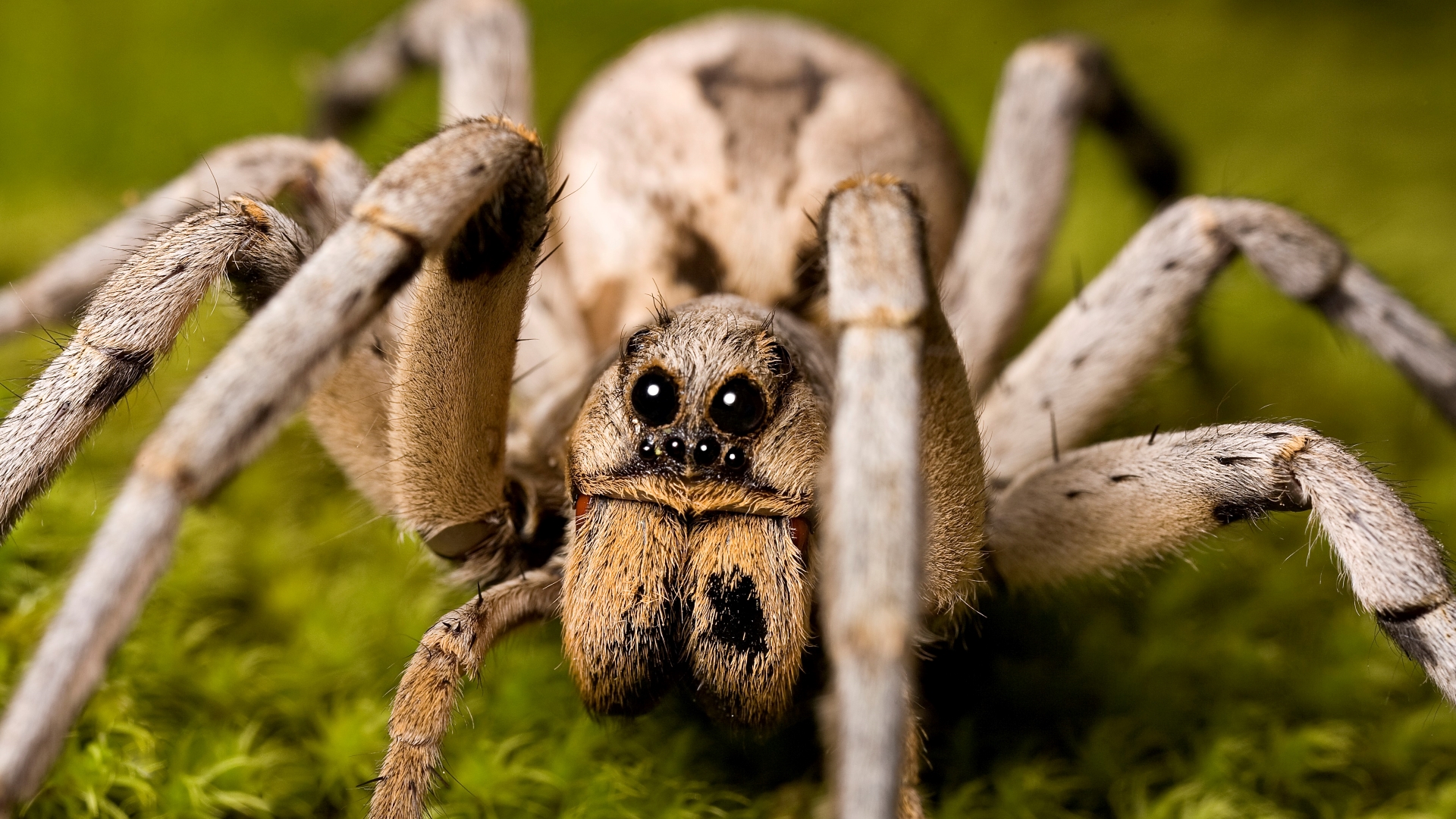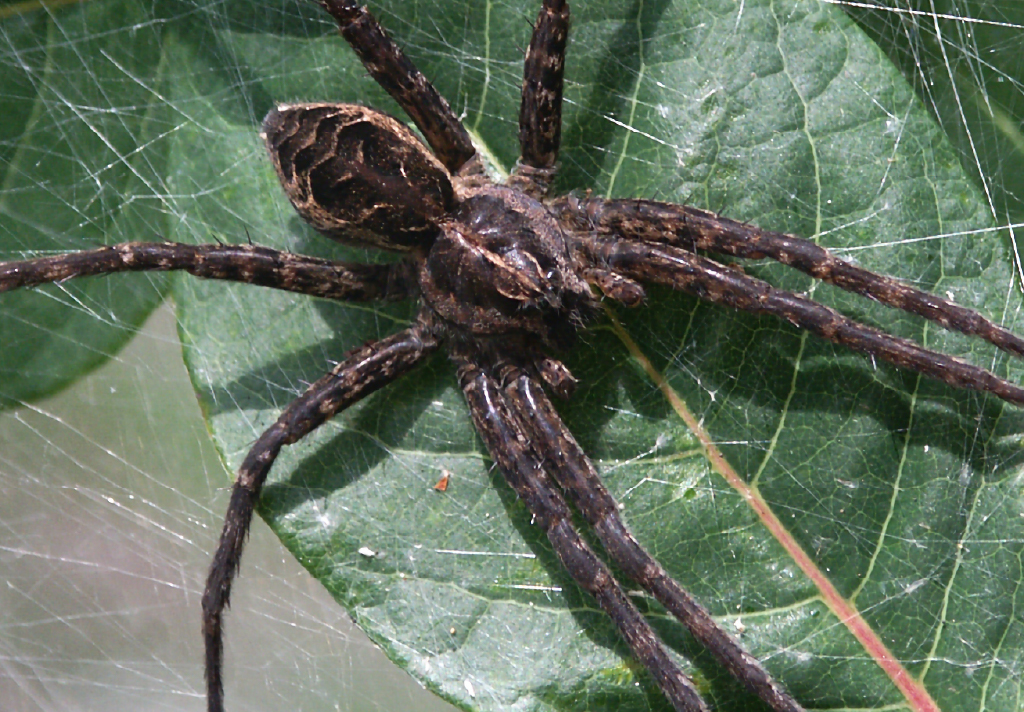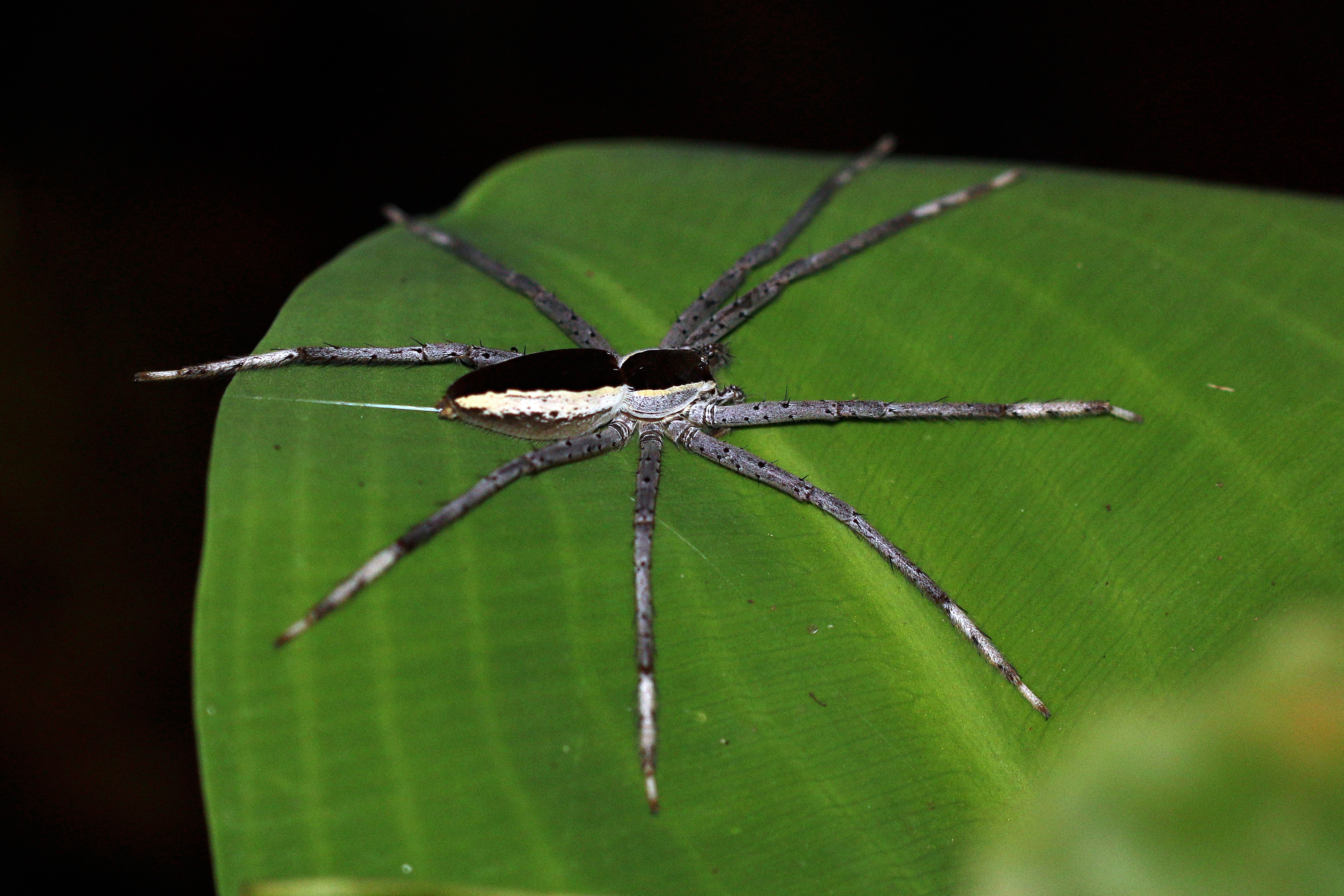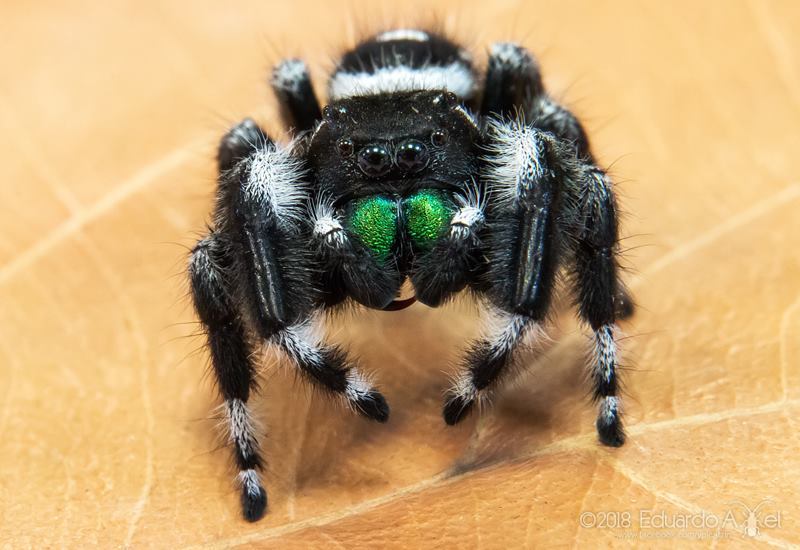Canada is home to a diverse range of spider species, including some of the largest spiders in the country. Dock spiders, also known as fishing spiders, are the largest native spider species in Canada. They are commonly found on docks, wharfs, and the margins of lakes, ponds, swamps, and rivers.
Dock spiders are closely related to wolf spiders and can grow up to three inches across, about the width of your hand. In addition to dock spiders, Canada is also home to other large spider species, such as nursery web spiders, striped fishing spiders, dark fishing spiders, Johnson’s jumping spiders, bold jumping spiders, and northern yellow sac spiders.
You are reading: The Top 8 Biggest Spiders Crawling Around Canada
In this article, we will explore the top eight biggest spiders crawling around Canada.

Top 8 Biggest Spiders Crawling Around Canada
Dock Spider

Dock spiders, also known as fishing spiders, are a type of spider that belongs to the Dolomedes genus. They are commonly found on docks, wharfs, and the margins of lakes, ponds, swamps, and rivers.
Dock spiders are semiaquatic and are able to hunt on the surface of the water itself, preying on mayflies, other aquatic insects, and even small fish. They hunt by waiting at the edge of a pool or stream, then when they detect the ripples from prey, they run across the surface to subdue it using their foremost legs, which are tipped with small claws.
Dock spiders are covered all over in short, velvety hairs which are hydrophobic, allowing them to use surface tension to stand or run on the water, like water striders. They can also climb beneath the water, and then air becomes trapped in the body hairs and forms a thin film over the whole surface of the body and legs, giving them the appearance of fine polished silver.
Dock spiders are one of the largest native spider species in Canada, with their body (including legs) almost filling your palm, and the body length of mature females can easily exceed 2 cm.
Nursery Web Spider

The nursery web spider (Pisauridae) is a family of araneomorph spiders that was first described by Eugène Simon in 1890. They are commonly found in tall grass, along wooded edges, and in shrubs, and sometimes even in houses.
Read more : 10 Types Of Pond Turtles
Here are some key facts about nursery web spiders:
– Appearance: Nursery web spiders are relatively large, slender-bodied spiders that are pale grey-brown with a pattern of dark brown and black stripes running the length of their bodies.
– Web-building: Females will gather leaves to build nursery webs when their eggs are near hatching. Once hatched, the spiderlings will inhabit this web until their first molt. During this time, the female guards the web from predators.
– Reproduction: Nursery web spiders are known to be univoltine, which means they only have one brood of offspring per year. The care of the offspring is typically solely the female’s responsibility; from carrying eggs to maintaining the sac until hatching, the female does most of the work, and the male’s role is very limited. The spiderlings molt multiple times, and at each stage, a larger skin develops to accommodate for the growing spider.
– Mating: For the actual mating stage, both the male and the female release draglines. The female hangs freely from her dragline, while the male uses his dragline to approach her.
– Eyes: Nursery web spiders have eight eyes, which appear in two horizontal rows. The bottom row is nearly straight, while the top row curves upward forming a “u” shape.
The name “nursery web spider” is especially given to the European species Pisaura mirabilis, but this family also includes fishing spiders and raft spiders. Adult female specimens may reach up to 15mm in length, excluding legs.
Wolf Spider
Wolf spiders are members of the family Lycosidae and are known for being robust and agile hunters with excellent eyesight. They are usually brown, gray, black, or tan with dark markings, most commonly stripes.
Here are some key facts about wolf spiders:
Appearance:
– Wolf spiders have a distinctive eye arrangement, with the front or anterior row composed of four small eyes of roughly the same size arranged in almost a straight row, and the back or posterior row arranged in a V-pattern with the apex next to the anterior row.
– Their body lengths range from about a quarter of an inch to over an inch long, not including their legs.
Behavior:
– Wolf spiders are solitary animals that typically roam alone in the night, stalking prey.
– They are ground-dwelling insects and other spiders, and they chase down and grab their prey with their excellent vision and running abilities.
– Wolf spiders do not spin webs to catch their prey; instead, they run it down.
Habitat:
– Wolf spiders are found throughout Australia and the United States.
– They live on the ground in leaf litter or burrows and are often found in lawns, gardens, and wooded areas.
Venom:
– Wolf spiders inject venom if continually provoked, and symptoms of their bites include swelling, mild pain, and itching.
– While wolf spider bites are not typically dangerous to humans, individuals who are allergic to spider venom may experience more severe symptoms.
Wolf spiders are an important part of the ecosystem, as they help to control insect populations and serve as prey for other animals.
Striped Fishing Spider
The striped fishing spider (Dolomedes scriptus) is a large spider species that belongs to the nursery web spider family Pisauridae and is commonly found around wetlands in southern Canada, much of the eastern United States, and a few Great Plains states.
Here are some key facts about striped fishing spiders:
Appearance:
– Striped fishing spiders are brownish-grey with lighter stripes around their legs and a stripe down each side of their body.
– They have two rows of eyes, with the front row composed of four small eyes arranged in almost a straight row, and the back row arranged in a V-pattern with the apex next to the anterior row.
– Females can grow to be over 6 cm in legspan, while males are smaller, ranging from 7 to 13 mm in length.
Behavior:
– Striped fishing spiders are called “fishing spiders” because they are often found near water and have been reported to catch small fish and aquatic insects from the water as they walk on the surface.
– They feel vibrations on the water surface to detect the movements of prey, then skate across the water to grab and subdue it.
– Striped fishing spiders are eaten by fish, frogs, birds, and even large dragonfly naiads.
Habitat:
– Striped fishing spiders prefer fast-flowing streams and rivers and are typically found on rocks above the waterline.
– They are also found in wooded areas and near water sources such as lakes, ponds, marshes, reservoirs, rivers, streams, and woods.
Medical Importance:
– Striped fishing spiders are quite shy and generally run from humans at the slightest movement.
– Bites are typically no more severe than a bee or wasp sting, and exceptions do occur in individuals who are sensitive.
Overall, striped fishing spiders are an important part of the ecosystem, as they help to control insect populations and serve as prey for other animals.
Dark Fishing Spider
The dark fishing spider (Dolomedes tenebrosus) is a species of fishing spider found in the United States and Canada. Here are some key facts about the dark fishing spider:
Appearance:
– Dark fishing spiders are brownish-black with few white markings.
– The abdomen has dark W-shaped patterns on the upper surface.
– Females are larger than males, with body lengths ranging from 15 to 26 mm, while males are 7 to 13 mm in length.
Behavior:
– Dark fishing spiders are shy and will usually run away from humans.
– They are opportunistic, generalist feeders, and have been known to consume slugs despite their sticky mucous.
– Dark fishing spiders are often found near water, but they are not as well adapted to an aquatic environment as some other Dolomedes species.
Habitat:
– Dark fishing spiders are found in wooded areas and dwell on trees.
– They are also found in swamp, pond, and lake margins, where they may be found on tree trunks, rocks, logs, and similar situations.
– Individuals are also found in dark and damp situations beneath bridges or culverts, or in rock piles.
– Some individuals enter houses, where they may be found in basements, kitchens, and even bedrooms.
Medical Importance:
– Dark fishing spider bites are typically no more severe than a bee or wasp sting.
– Exceptions do occur in individuals who are sensitive to spider venom.
Overall, the dark fishing spider is an interesting and important part of the ecosystem, as they help to control insect populations and serve as prey for other animals.
Johnson’s Jumping Spider
Johnson’s jumping spider (Phidippus johnsoni) is one of the largest and most commonly encountered jumping spiders of western North America. Here are some key facts about Johnson’s jumping spider:
Appearance:
– Johnson’s jumping spider is black and orange, with a dark line running down the abdomen of females.
– They are relatively large for a jumping spider, with a body length of up to 2 cm.
Behavior:
– Johnson’s jumping spiders are active hunters that stalk and pounce on their prey.
– They have excellent vision and are able to jump up to 50 times their body length to catch prey.
– Johnson’s jumping spiders are not dangerous to humans and are not known to bite unless provoked.
Habitat:
– Johnson’s jumping spiders are found in a variety of habitats, including suburban gardens, beaches, fields, and oak woodlands.
– They occur from sea level to tree line, occupying relatively dry habitats such as coastal dunes or oak woodlands.
– The distribution of Johnson’s jumping spider is bounded by the Great Plains, the Pacific Ocean, northern Mexico, and southern Canada.
Care:
– Johnson’s jumping spiders are popular as pets due to their active and curious nature.
– They require a small enclosure with plenty of hiding places and a substrate of coconut fiber or vermiculite.
– Johnson’s jumping spiders should be fed a diet of small insects such as fruit flies, pinhead crickets, and small moths.
Read more : 6 Types Of Ants Set To Emerge In Minnesota This Summer
Overall, Johnson’s jumping spiders are an interesting and important part of the ecosystem, as they help to control insect populations and serve as prey for other animals.
Bold Jumping Spider

The bold jumping spider (Phidippus audax) is a common species of spider belonging to the genus Phidippus, a group of jumping spiders easily identified by their large eyes and their iridescent chelicerae. Here are some key facts about the bold jumping spider:
Appearance:
– Bold jumping spiders are black and orange, with a pattern of white, yellow, or orange spots on the top of the abdomen.
– Females are larger than males, with body lengths ranging from 8 to 19 mm, while males are 6 to 13 mm in length.
Behavior:
– Bold jumping spiders are active hunters that stalk and pounce on their prey.
– They have excellent vision and are able to jump up to 50 times their body length to catch prey.
– Bold jumping spiders are not dangerous to humans and are not known to bite unless provoked.
Habitat:
– Bold jumping spiders are found in a variety of habitats, including suburban gardens, beaches, fields, and oak woodlands.
– They are commonly found in and around Pennsylvania homes.
– Bold jumping spiders occur across North America from southeastern Canada west to British Columbia, and south to Florida, the Gulf Coast, and northern Mexico.
Medical Importance:
– Bold jumping spider bites are typically no more severe than a bee or wasp sting.
– Exceptions do occur in individuals who are sensitive to spider venom.
Overall, bold jumping spiders are an interesting and important part of the ecosystem, as they help to control insect populations and serve as prey for other animals.
Northern Yellow Sac Spider
The Northern Yellow Sac Spider (Cheiracanthium mildei) is a species of spider that belongs to the family Cheiracanthiidae. Here are some key facts about the Northern Yellow Sac Spider:
Appearance:
– Northern Yellow Sac Spiders have a pale yellow or cream-colored body, with the jaws (chelicerae), tips of the tarsi, and palps dark brown.
– They have brown jaws, darker legs, and dark dorsal stripes running vertically across the abdomen.
– They have eight eyes in two horizontal rows.
Behavior:
– Northern Yellow Sac Spiders are nocturnal spiders that are active at night and hide during the day.
– They are opportunistic hunters that feed on small insects and other spiders.
– Northern Yellow Sac Spiders are not dangerous to humans and are not known to bite unless provoked.
Habitat:
– Northern Yellow Sac Spiders can be found walking about on foliage, under leaf litter, stones, and boards, and on buildings under the window sills and siding, in addition to the corners of walls and ceilings within homes.
– They are commonly found in homes and other man-made structures.
– Northern Yellow Sac Spiders are found throughout North America, including the United States and Canada.
Medical Importance:
– Northern Yellow Sac Spider bites are typically no more severe than a bee or wasp sting.
– Exceptions do occur in individuals who are sensitive to spider venom.
Overall, Northern Yellow Sac Spiders are an interesting and important part of the ecosystem, as they help to control insect populations and serve as prey for other animals.
FAQS
1. Are these spiders dangerous to humans?
Most of the spiders on this list are not dangerous to humans and are not known to bite unless provoked. However, exceptions do occur in individuals who are sensitive to spider venom.
2. Where can I find these spiders?
The habitats of these spiders vary, but they are commonly found in wooded areas, near water sources, and even in homes and other man-made structures.
3. How big are these spiders?
The body lengths of these spiders range from about a quarter of an inch to over two inches long, not including their legs.
4. What do these spiders eat?
These spiders are opportunistic hunters that feed on small insects and other spiders.
5. Are these spiders beneficial to the ecosystem?
Yes, these spiders are an important part of the ecosystem, as they help to control insect populations and serve as prey for other animals.
6. Are there bigger spiders in the world?
Yes, there are bigger spiders in the world than the ones found in Canada. The biggest spider in the world is the Goliath birdeater, which can have a leg span of up to 30 cm.
Source: https://petstutorial.com
Category: Animals










